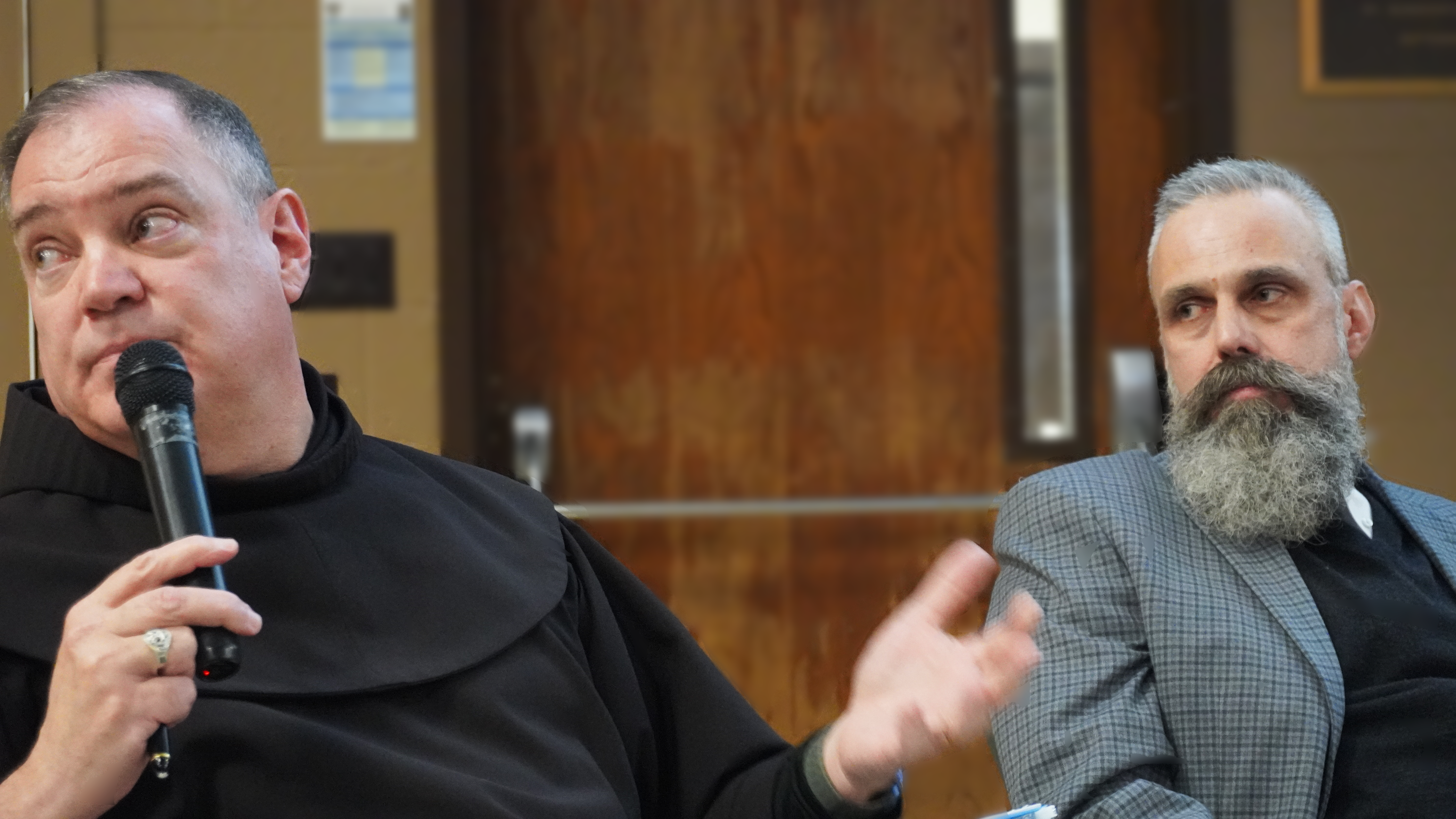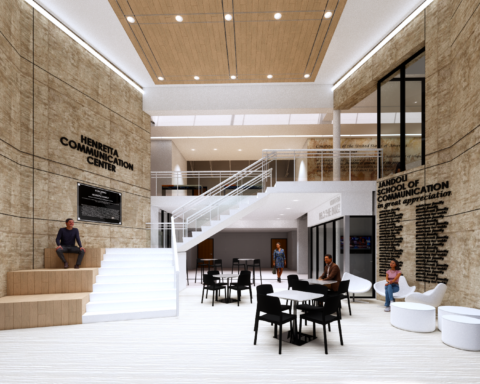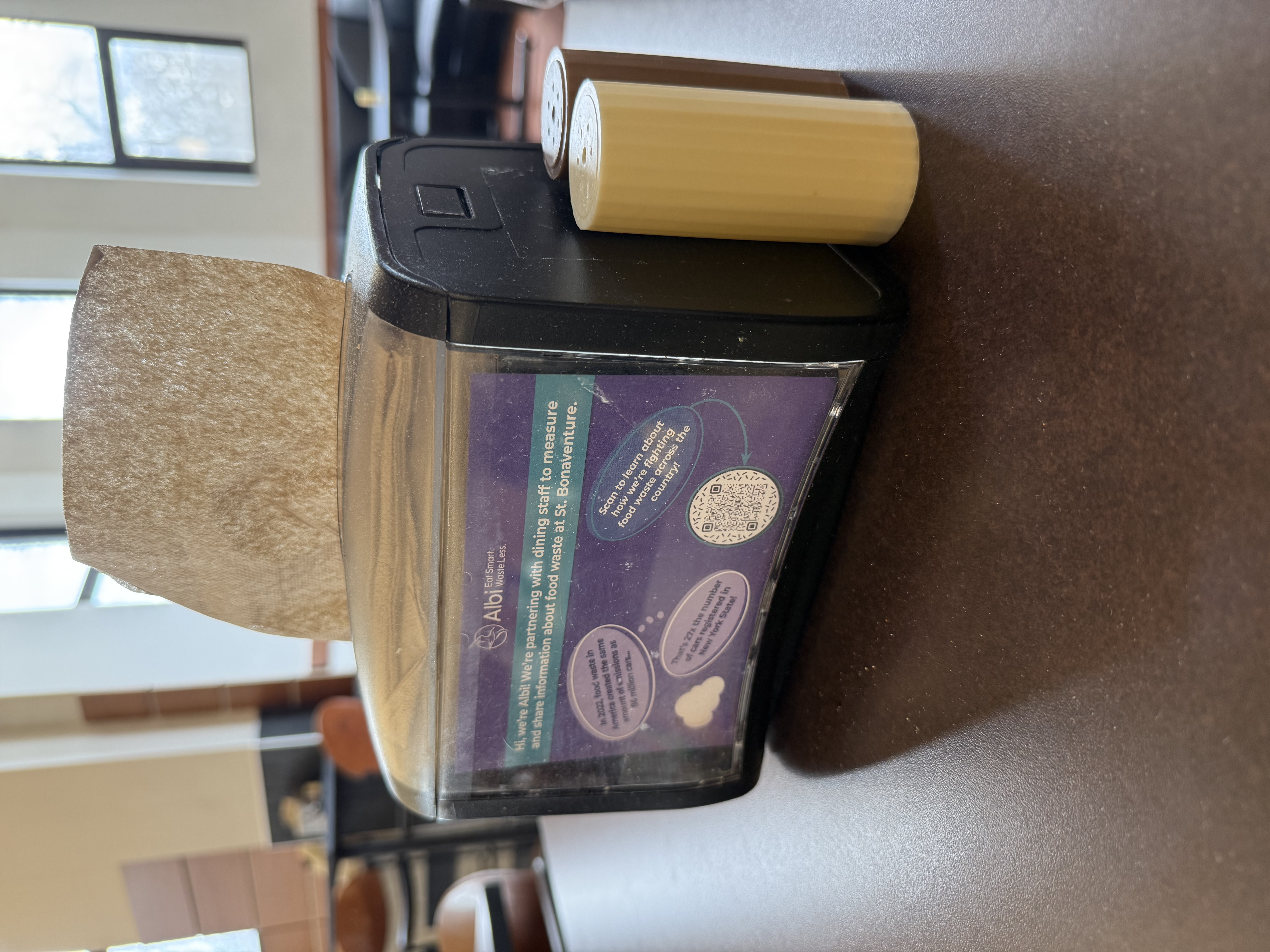A Blue Light on Campus
Courtesy of Donald Gilliland
BY: ISABEL MARZULLO, FEATURES ASSIGNMENT EDITOR
“That’s not safe,” said Kayla Bonin, a junior biology major, when told St. Bonaventure University has five blue lights total on its 500-acre campus. In comparison, SUNY Fredonia’s campus is 256 acres and has 50 blue lights, and D’Youville University in Buffalo has 17 acres with 13 blue lights. The blue, eight or 10-foot high posts feature a blue light, a speaker and microphone for people to directly contact campus security with emergencies.
Colleges have been utilizing blue lights for over 30 years, with the first light being made in 1990 after the rape and murder of Jeanne Clery, a student who attended Lehigh University in Pennsylvania.
Bonin was also uneasy about the chosen blue light locations.
“They need to be less covered because the blue light in front of Francis has a bike rack in front of it, so you literally have to climb across that [bike rack], plus it’s in a corner, so you’re trapped,” said Bonin in an interview at the end of last semester.
Another problematic blue light is in the public restroom on the way toward the townhouses. Individuals must enter the building through one door, creating a one-point exit. Campbell Dougherty, a junior education major, said she was worried about becoming trapped.
“If I was in a really dangerous situation and had to be stuck in a bathroom for whoever knows how long, how’s that helping anybody?” said Dougherty.
Students would need to run and find the light. For those reasons, Dougherty expressed wanting blue lights placed in the center of campus. “If there was one [blue light] near me, I’d try to get to it, but if I wasn’t near one and someone was threatening my life, I wouldn’t risk my life to go find one [light],” she said.
There are also no blue lights on the hiking trails behind the school, which sports teams and students use daily and can cause concern.
According to the most recent public findings on the 2022 annual security and fire safety report there has been one fondling, one stalking, six domestic violence and nine burglaries at Bonaventure’s campus. Compared to four rapes and four burglaries at SUNY Fredonia.
While there’s no proof that Fredonia’s statistics are lower because of blue lights, they can make students feel safer.
“I would definitely go on more walks if we [Bonaventure] had more blue lights,” said Bonin.
While blue lights are not required by law, some students have raised concerns over whether Bonaventure should be taking extra safety precautions. Blair Baptiste, a junior communications major, said “I feel like we [Bonaventure] don’t spend money on things we should be spending money on. The school should take our safety and security more seriously, especially with the fondling incident [an individual from outside Bonaventure walked onto campus and fondled a student]. Our campus is so open, we [Bonaventure] should take extra precautions to protect students.”
Gary Segrue, the associate dean for Campus Safety, said in an email: “The rise of digital phone technology have rendered blue light towers somewhat obsolete.”
He wrote, “I do not want to invest Safety and Security funding in old technology when new technology exists which is easier to use and readily available.”
Segrue indicated that increased cell phone access has worked to replace blue lights and suggested students in danger use the BonniesConnect app.
“A Bonaventure student can download the Bonnie’s Connect App and have a virtual blue light on their cell phone,” he wrote. “The Safety and Security phone number appears which can be pressed to initiate a call. In addition, a student can simply call 911 from their phone.”
Several students said they were unaware this feature existed on the app and Sbu.edu only has one mention of the BonniesConnect app — it’s for students to purchase tickets for the break bus.
“I didn’t even know you could do that [call Safety and Security] on BonniesConnect,” said Emma Phillips, a senior psychology major. “It was never covered in any courses. I’d be more willing to call 911 because I don’t trust them [Safety and Security] to have a timely response.”
Segrue also said the bike rack in front of the Francis blue light isn’t an issue.
“Bike racks should not impede one’s ability to use a blue light,” he wrote. “There have been occasions in which facilities employees may move a bike rack to mow an area of grass and not return it [bike rack].”
The bike rack that obstructed the Francis blue light last semester has since been moved.
Segrue also believes having a blue light in the public restroom is okay.
“Due to the amount of campus community traffic and the existence of proper infrastructure to support blue light technology, it is an appropriate place for a blue light,” said Segrue.
There are no blue lights on the hiking trails behind the school.
“There is no technology infrastructure on the Allegheny River Trail to support blue lights or surveillance cameras,” wrote Segrue. “We tend to employ both security features together. Alternatives such as blue lights with cell dialers and point-to-point surveillance cameras are cost-prohibitive.”
According to Segrue, “There has not been a single incident of a crime or emergency reported via a blue light or yellow emergency phone.
“Security has received calls from blue lights or yellow emergency phones from local food delivery services, students locked out of residence halls and individuals leaning against the call button,” he said.
Multiple students said they were unaware of the campus having yellow phones.
“I didn’t even know we had yellow phones to be honest. I’m not even sure how they work,” said Courtney Seymour, a junior business major.
Despite no plans to add more blue lights and saying the ones that do exist are “obsolete,” Segrue said the university plans to keep the established lights.
“Blue light and yellow emergency phones do convey a feeling of safety, and I have to weigh if the symbolic nature of the phones is worth the cost to purchase new and maintain current phone,” wrote Segrue. “I intend to maintain the current inventory.”
marzulig22@bonaventure.edu








